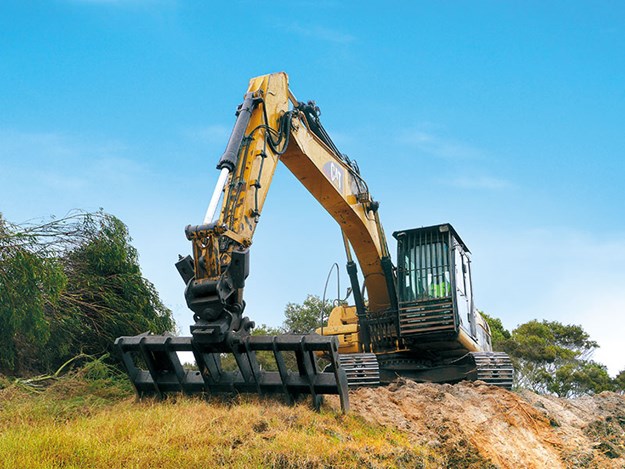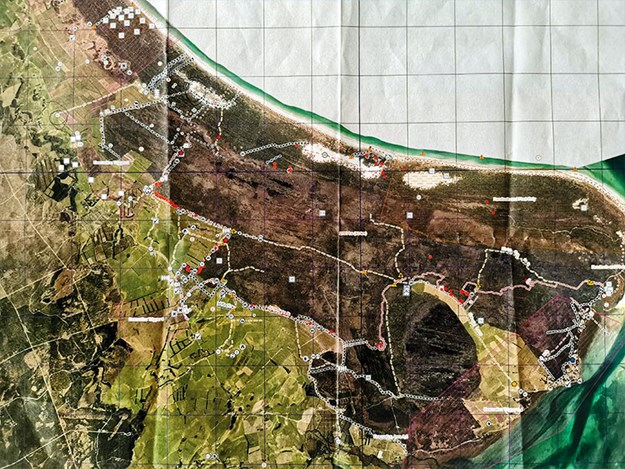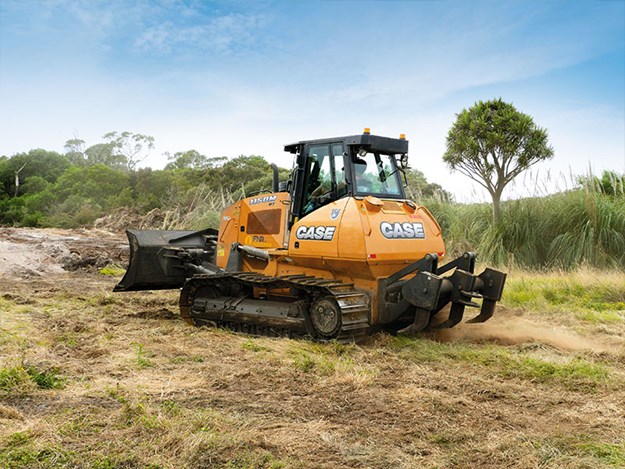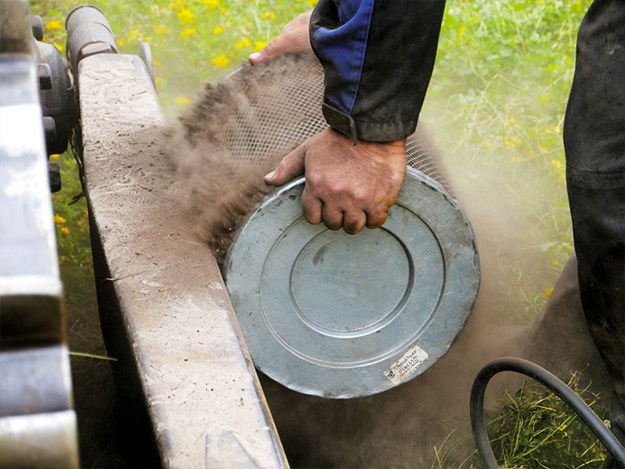Special feature: Waiharara fire
In the Far North and on-site at a huge vegetation fire, armed with an A3 map printout and kitted up in appropriate protective clothing, the Ed goes in search of heavy machinery being used to cut the firebreaks
With the Northland COVID-setting dropping from Red to Orange status for a brief period, I was able to use that window of opportunity and obtain permission to speak to some of the machinery operators working on the massive Waiharara fire, some 30km north of Kaitaia.
I was informed that I’m the only media person to have been given official access to the fireground by Fire Emergency New Zealand and that has to do with my understanding of operational procedures, being an ex-long-term firefighter.
The only problem is the small matter of finding the machinery in among all the scrubby vegetation.
"Should we take the right or left fork here?" says my buddy and Fire and Emergency representative Brett Southey.
"There are machine tracks over here,"
I say, consulting the map and pointing along a cleared firebreak that winds off through the scrub-covered sand dunes into a seemingly endless vista of malnourished bush. "We need to go that way."
 |
|
Contractors were brought in to cut fire breaks, which helped contain the fire
|
It’s a surprise much grows here at all, considering the ground is predominately sand and peat, but once a lot of the region held massive kauri forests until some event levelled everything in sight. This much we do know, as the once pristine forests lay in peat swamps not far below the surface. Apparently, boffins have date ranged preserved logs from 800 to 60,000 years.
Views differ, but my money is on a tsunami or phenomenal wind event causing the destruction of the forests, and though I’m no expert, in the late 1970s, I recall seeing fallen logs laying mostly in one direction, during swamp kauri extraction work on a relative’s farm, not far from where we were. For many years, entrepreneurs have sought their fortunes excavating swamp kauri, and today, tight restrictions control the removal, sale, and export of the highly sought-after wood.
Almost 3000 hectares
 |
|
The fire covered an area of over 28 square kilometres
|
It’s here in the Far North (or Far Far North as one local described it) that Fire and Emergency, along with the Department of Conservation (DOC) and local iwi, have been supported by external providers such as Forest Protection Services (DOW 346) and the contractors we saw on the day of our visit.
No doubt one of New Zealand’s largest rural fires on record, at the time of writing it had worked through an area of more than 2800 hectares (that’s 28 square kilometres), since igniting in mid-December 2021.
The suppression work is focusing on protecting numerous rural properties, natural fauna, and wildlife. Casting an eye a bit further afield leads to some big pine plantations, so understandably there’s a concerted effort to stop any further fire spread.
With the difficult ground conditions, a large part of the suppression work has been through the use of aircraft and heavy equipment, with local earthworks contractors being called in to create wide and lengthy firebreaks.
The efforts by everyone so far are impressive and speaking with incident controller Wayne Martin and others of his team, I got the feeling they’re confident things are going according to plan.
"Our biggest problem was getting equipment and personnel on the ground, as the fire began just prior to the Christmas holidays. Once we worked through that, things flowed well," Wayne says. "I’m pleased with how we’re progressing."
Around here somewhere
 |
|
Crews were faced with one of the largest fires NZ has seen in recent times
|
Anyway, back to the chase.
It wasn’t long before we spotted a few utes and service truck alongside a couple of parked up bulldozers. A little further up on the hill, a Caterpillar 330D excavator complete with root rake was busy clearing vegetation.
I was keen to have a talk with the operator but waited until permission was granted.
Case 1150M bulldozer
 |
|
Far North Roading had a Case 1150M dozer on-site
|
As luck would have it, we found the operators taking a quick break, while a mechanic addressed what appears to be the biggest issue in these dry conditions—dust build-up in the cooling and air intake systems.
As mentioned earlier, the land is predominately sand and peat country, so the dust can be thick and abrasive. Either way, it’s going to collect fast.
Far North Roading Ltd operator Ricky Masters looked on as Rore Nathan delivered a stream of compressed air to the radiator fins of the Case 1150M bulldozer. Tipping the scales at 14804kg plus the rippers, the airconditioned cab of the 127hp (95kW) machine with its six-way angle-tilt blade and wide windows seems to be an ideal piece of kit for the work its currently on.
Unfortunately, the fine dust doesn’t care whether a machine is new or old; it still gets removed using the same method.
"Clearing firebreaks is a bit different to what we normally do," says Ricky "The dozer is going well on the work. I haven’t had any issues so far," says Ricky.
A short time later, the Case 1150M builds up revs to backflush the last stray dust particles out of the radiator fins, and Ricky was ready to head out for a few more hours.
Caterpillar D6D bulldozer
 |
|
Dust was one of the biggest issues for contractors machinery
|
As an air-conditioned comforted Ricky trundled off in the Case 1150M, on the other side of the paddock, a Caterpillar D6D bulldozer underwent the same dust-removal treatment. Owner Grant Morey of Awanui-based Morey Excavator Hire Ltd was on-site and updated us on things.
"We’ve got this and a Caterpillar 320D excavator working here," Grant says, pointing to the machine we saw in action when arriving earlier.
"The ground conditions are ok to work in, but the biggest problem around here is the dust we kick up. I’m just about to head into the workshop to sort the electric starter for our compressor, so it’s easier for the guys to dust out their machines."
Caterpillar D6D bulldozers were once the mainstay of rural contracting and many companies still run the reliable machines in their fleets. Grant’s dozer features a full cab, although, modern air conditioning was unheard of when the models were released, so interior airflow is strictly controlled by how many doors are kept open. There would be many an operator itching to get behind the controls of a D6D once again, and it was great to see a tidy example earning its keep.
Caterpillar 320D excavator
 |
|
Regular cleaning of air filters was necessary
|
Not wanting to interrupt for too long, I was escorted up a small hill to have a quick word with Jordan Neho who has been busy with a root rake on a 21-tonne Caterpillar 330D. Shutting his machine down for a few minutes, we were given the ‘all clear’ signal and approach for a chat.
"I like using the Cat; it handles the work well," says Jordan.
"I’m finding it enjoyable and pretty straightforward. It’s just a matter of following where they mark it out.
"It can get awkward with the wider firebreaks because it means a bit of double handling, but you get used to the different conditions."
In a couple of hours, Jordan swapped out and headed across to Whangapae, some 80km away, to load out a couple of loads of logs. He also works as a stevedore at Marsden Point stacking logs on ships, so it appears he has Northland well covered.
Cutting the firebreaks
 |
|
The ground varied from sand base to peat swamp
|
Grant’s gear has been in use cutting firebreaks since the early stages of the fire, and they have a good understanding of what’s required. To me, it looks like the firebreaks are around three or four bulldozer blades wide, so something like 12 metres across, although, others are clearly much wider than that.
"Work is carried out well clear of the fireline and the widths will vary depending on the topography and the type of vegetation. The fire team will mark out with pink tape a left and right perimeter. From there, we will clear everything in between," Grant says.
Grant tells us that he’ll soon have another excavator on-site and that will dig out the hot spots, allowing firefighters to fully extinguish the smouldering peat.
"Things are getting under control, but it’s hard to determine how long we will be here. We’ll be here until the fire is out, that much I do know.
"At the end of the day, though, we’re tucked up in a cab pulling levers. The real hard workers are the people on the ground dragging hose and putting the fire out—that’s impressive. We’re just here supporting them."
Find new and used heavy machinery for sale in NZ
Keep up to date in the industry by signing up to Deals on Wheels' free newsletter or liking us on Facebook.






.jpg)
.jpg)
.jpg)
.jpg)

